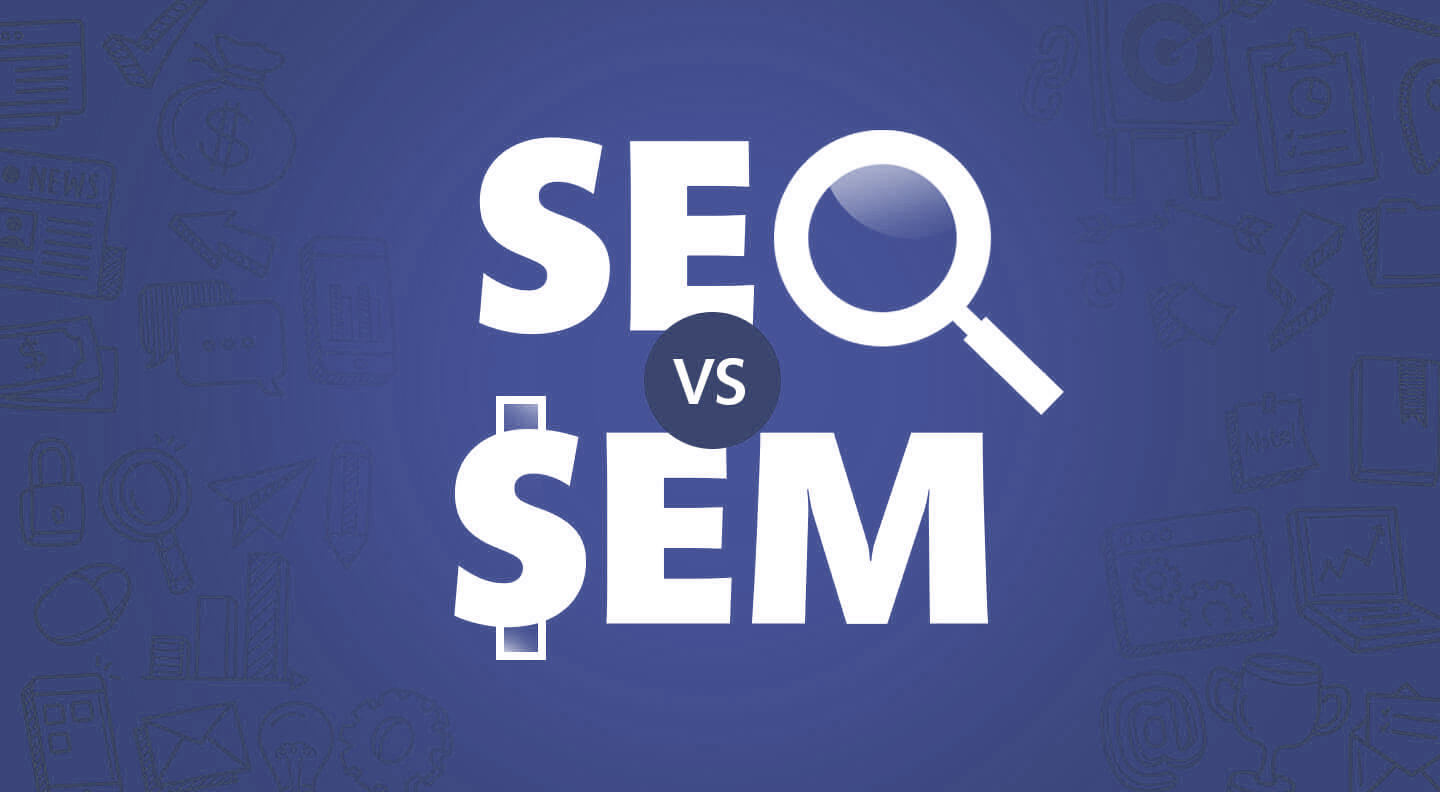
Why SEO is More Organic and Better Than SEM
Why SEO is More Organic and Better Than SEM
In the world of digital marketing, two key strategies that dominate the online visibility landscape are Search Engine Optimization (SEO) and Search Engine Marketing (SEM). Both are aimed at improving a website's visibility on search engines like Google, but they differ significantly in their approach, costs, and long-term effectiveness. While SEM involves paid advertising, SEO focuses on organic strategies to improve rankings and increase traffic. In this article, we'll delve into why SEO is more organic and, in many cases, better than SEM.
1. Understanding SEO and SEM
Before diving into the comparison, it’s essential to understand what SEO and SEM are:
SEO refers to the practice of optimizing your website to rank higher in the organic (non-paid) search results on search engines. It involves techniques such as keyword optimization, creating valuable content, improving website speed, mobile-friendliness, backlink building, and on-page and off-page optimization.
SEM, on the other hand, involves paid strategies, primarily Pay-Per-Click (PPC) ads, where businesses bid on keywords to have their website shown at the top of search results. Popular SEM platforms include Google Ads, Bing Ads, and social media advertising platforms.
2. Cost-Effectiveness of SEO
One of the most significant advantages of SEO over SEM is cost-effectiveness. SEM, particularly PPC campaigns, involves ongoing costs, as advertisers pay for every click on their ads. These costs can accumulate quickly, especially in competitive industries where the cost per click (CPC) is high.
In contrast, SEO is generally considered more cost-effective in the long run. While the initial investment in SEO can be substantial (for example, hiring an SEO expert or agency, creating quality content, and improving technical SEO), the ongoing costs are significantly lower. Once your website starts ranking organically, the traffic you receive is free, and you don’t have to continue paying for clicks.
The long-term benefits of SEO outweigh the initial investment, especially if your website continues to rank well and attract organic traffic over time. It is a sustainable strategy that can deliver substantial returns on investment (ROI).
3. Sustainability and Long-Term Results
One of the most significant distinctions between SEO and SEM is the sustainability of results.
SEO: Once a website achieves high organic rankings, it tends to stay in those rankings for a longer period, especially if it continues to maintain best practices and provide valuable content. This means that you can continue to reap the benefits of increased traffic without paying for every click, as long as your website maintains relevance and authority.
SEM: In contrast, SEM results are temporary. As soon as the budget runs out or the ad campaign ends, your website will no longer be visible in the paid ads section of search results. Essentially, SEM provides short-term visibility that disappears once the campaign stops, making it less sustainable over time.
Thus, SEO offers a more long-term, organic approach to online visibility. The results from SEO can continue to benefit a website for months or even years if the strategy is effective and consistently maintained.
4. Credibility and Trust
Users tend to trust organic results more than paid ads. According to several studies, people are more likely to click on organic listings because they perceive them as more credible and trustworthy. This is because organic results are earned through quality content, authority, and relevance, rather than through a paid bidding process.
On the other hand, paid ads are often viewed with skepticism, especially since many users know that businesses are paying for those top positions. Some users may even ignore paid ads entirely, focusing only on organic listings.
SEO provides an organic, more authentic form of visibility that fosters trust with your audience. This is crucial for building long-term relationships with customers and creating brand loyalty.
5. Higher Click-Through Rates (CTR)
Studies have shown that organic listings receive a higher click-through rate (CTR) than paid ads. In fact, organic search results often dominate the first page of search results, with the first few positions getting the majority of the clicks.
This is because users tend to prefer organic listings, as mentioned earlier, and they view these listings as more reliable. Organic results are also often more relevant to the user's search query since they are determined by search engine algorithms based on factors like content quality, keyword relevance, and website authority.
SEM can bring in targeted traffic quickly, but SEO is generally more effective at capturing long-term, high-quality traffic from users who are genuinely interested in what you offer.
6. Better User Experience
SEO focuses on improving the overall user experience (UX) of a website. Search engines like Google prioritize websites that are user-friendly, fast, and mobile-responsive. By optimizing your site for SEO, you are inherently improving the experience for your users. This includes faster load times, mobile optimization, well-structured content, and easy navigation—all factors that contribute to a positive user experience.
In contrast, SEM focuses on driving traffic through paid ads, but it doesn’t necessarily improve the overall user experience. While ads can drive immediate traffic, if the landing page or website doesn’t provide a good user experience, visitors will leave quickly, resulting in a high bounce rate.
SEO ensures that your website is optimized not only for search engines but also for users, leading to more satisfied visitors who are likely to convert.
7. Increased Visibility in Local Search Results
For businesses targeting local customers, SEO can be incredibly beneficial. With local SEO strategies, websites can rank in local search results and appear on Google Maps, which is essential for businesses with physical locations or services targeting specific geographic areas.
SEM also allows businesses to target local keywords, but SEO can provide more sustainable, organic visibility in local search results. Google’s local algorithm considers factors such as proximity, relevance, and prominence, which can be strengthened through local SEO efforts like creating and optimizing a Google My Business profile and garnering local backlinks.
By optimizing for local SEO, businesses can increase their chances of being found by nearby customers who are actively searching for products or services in their area.
8. SEO Offers Better ROI
While SEM provides instant traffic, the cost per click can add up quickly, especially in competitive industries. SEO, on the other hand, offers better ROI over time. While it may take longer to see results, the traffic you receive is free, and the investment in SEO often yields higher returns over the long term.
Once a website ranks well in organic search results, it can continue to drive traffic for months or even years without additional spending. The compounding nature of SEO means that, over time, your investment grows in value, making it a highly cost-effective strategy in comparison to SEM, which requires continuous financial input.
9. Adaptability and Algorithm Updates
Search engines regularly update their algorithms, which can impact both SEO and SEM strategies. However, SEO is more adaptable to algorithm changes because it focuses on delivering high-quality, relevant content that provides real value to users. Websites that follow SEO best practices, such as creating user-friendly, valuable content and acquiring high-quality backlinks, are more likely to recover from algorithm updates that affect search rankings.
In contrast, SEM relies heavily on the bidding process, and changes to ad auction algorithms or the cost per click can significantly impact your ad campaigns. When these changes occur, you may need to adjust your budget or strategy, making SEM less flexible in comparison to SEO.
10. Building Brand Authority
SEO is a powerful tool for building brand authority and credibility over time. As your website ranks higher for relevant keywords and attracts organic traffic, your brand becomes associated with trust and expertise in your industry. This authority can lead to long-term success, as customers are more likely to turn to brands they trust when making purchasing decisions.
SEM, while effective for driving immediate traffic, doesn’t provide the same long-term authority-building benefits. While ads may bring in visitors, they don’t contribute to the overall reputation of your brand in the same way that organic content and SEO strategies can.
Conclusion
While SEM can provide short-term results and targeted traffic, SEO offers a more organic, sustainable, and cost-effective approach to driving traffic, improving user experience, and building long-term brand authority. SEO’s ability to deliver free, high-quality traffic over time, combined with its focus on creating value for users, makes it the better choice for businesses looking for a lasting online presence. By investing in SEO, businesses can enjoy long-term visibility, credibility, and ROI that SEM alone cannot match.
Ultimately, the choice between SEO and SEM depends on your specific goals, budget, and timeframe. However, for businesses seeking organic growth and long-term success, SEO remains the better and more sustainable option.

